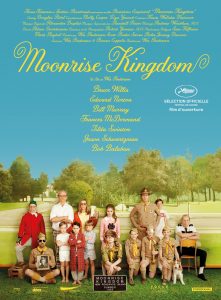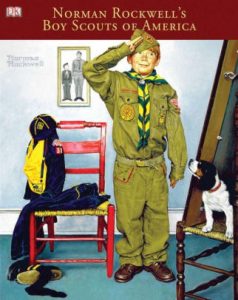MOONRISE KINGDOM
BEFORE THE FILM
1. Look at the poster of the film.
What kind of film is it? What can you imagine about the film?
What do you think of the title?
Compare the French version with the American one. What differences can you find?
Now watch the trailer HERE.
2. Who is Wes Anderson, the director?
He is an American director. He was born in 1969 in Houston, Texas. He looks like a dandy. He usually wears suits and he deeply loves the yellow colour that you can find in all his films!
You can learn more about his style watching some memorable advertisements he has directed HERE.
He’s particularly fond of families, animals, childhood, painting, writing, books and letters.
3. The script and the aesthetics.
Which period of time do the costumes and the scenery make you think of?
What is the meaning of ‘Pop Culture’? And ‘vintage’?
We usually mean an old item, which carries certain nostalgic value, and potentially is of high quality. It normally means something that is at least 20 years old, but not more than a 100, as then it would be classified as antique.
Think about the link between Noah’s ark and the Flood and the storm coming on the island.
4. The technique.
Wes Anderson et son chef opérateur, Robert Yeoman, composent la majorité des cadrages selon des règles géométriques strictes.
Les horizontales et les verticales sont mises en valeur par leur parallélisme avec les bords de l’image ; les personnages et les objets sont souvent saisis de face, au centre. Mais il n’y a pas que la composition des images qui produit cette rigueur géométrique. La mise en scène des personnages et des objets, les détails des costumes ou des décors à l’intérieur des images, suivent les mêmes règles. Considérons l’horizontale. Relever toutes les manières dont sont construits des alignements, des enfilades ou des ribambelles (file indienne de corps, utilisation de cordes tirées, accentuation des horizons, mouvements latéraux de la caméra) est un exercice qui peut être fait de mémoire, après la vision du film. Vous remarquerez que le procédé se répète, sans jamais produire des images identiques. Tout en donnant le sentiment d’être obsessionnelle, la mise en scène de Wes Anderson est constamment inventive.
5. The music
Music is very important to him.
Music by British composer Benjamin Britten plays a surprisingly prominent role in Moonrise Kingdom.
The film’s duo protagonists, 12-year-olds Sam and Suzy, first meet at a rehearsal for a production of Britten’s Noye’s Fludde (Noah’s Flood) — and this opera written for a mix of professionals and amateurs proves integral to the film’s plot.
Anderson performed in Noye’s Fludde himself when he was 10 or 11 years old. He says he’s been humming « these hymns and things from that play/opera all my life. »
And there’s something about Britten’s « children’s music » that appeals pretty directly to Anderson’s sensibilities as an auteur. As the filmmaker observes, they are « classical pieces that are meant to have an audience of children, but are not written down to children — they’re meant to educate children in what classical music really is. Britten seemed really motivated by that. » (No surprise that Britten’s The Young Person’s Guide to the Orchestra, narrated conducted by Leonard Bernstein, also makes a cameo in Moonrise Kingdom.)
It’s also pretty fun to develop theories about the significance of Britten’s music in Anderson’s film. That is to say:
- Britten’s opera Peter Grimes takes place in an insular seaside village on England’s east coast. Moonrise Kingdom takes place in an insular seaside village on New Penzance, an imaginary island off the coast of New England.
- Grimes: a terrible storm. Moonrise Kingdom: a terrible storm.
- Grimes: in Britten’s words, an opera about « the struggle of the individual against the masses. » Moonrise Kingdom: nearly everybody struggles, with the possible exception of Social Services (Tilda Swinton).
- Britten’s opera Billy Budd: major cruelty in the British navy. Moonrise Kingdom: sadistic machinations amongst Khaki Scouts.
Here‘s pretty much every song used in a Wes Anderson film.
6. His sources of inspiration.
Do you know Norman Rockwell?
Norman Percevel Rockwell (February 3, 1894 – November 8, 1978) was an American author, painter and illustrator. His works have a broad popular appeal in the United States for their reflection of American culture, the American way of life. Rockwell is most famous for the cover illustrations of everyday life he created for The Saturday Evening Post magazine over nearly five decades.
L’Amérique mythologique n’existe que dans ses dessins! Vision idéale de la famille, des scouts… un idéal des années 50. Il parle de l’Amérique des pionniers, idéal des origines.
He is also noted for his 64-year relationship with the Boy Scouts of America (BSA), during which he produced covers for their publication Boys’ Life, calendars, and other illustrations.







